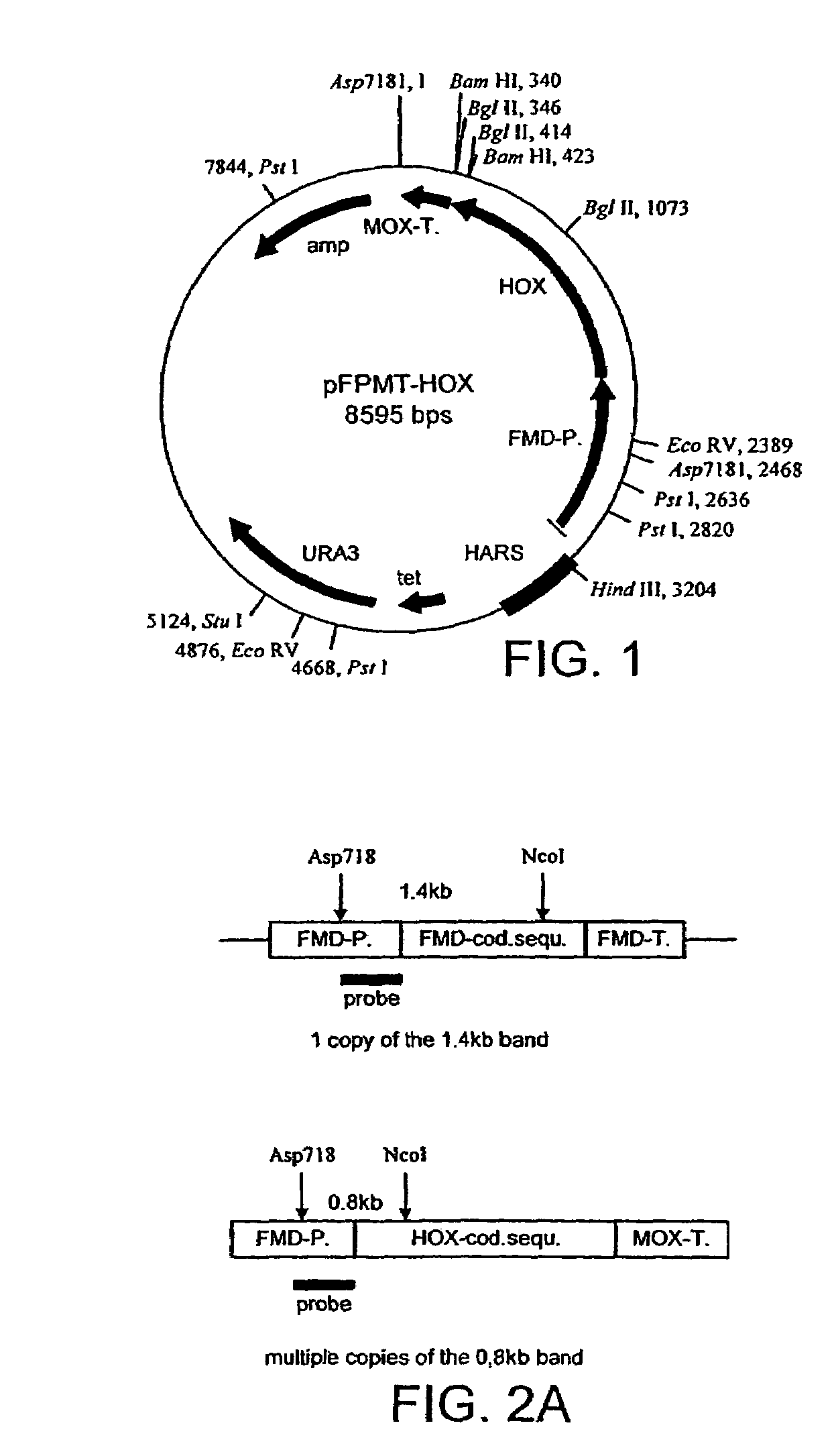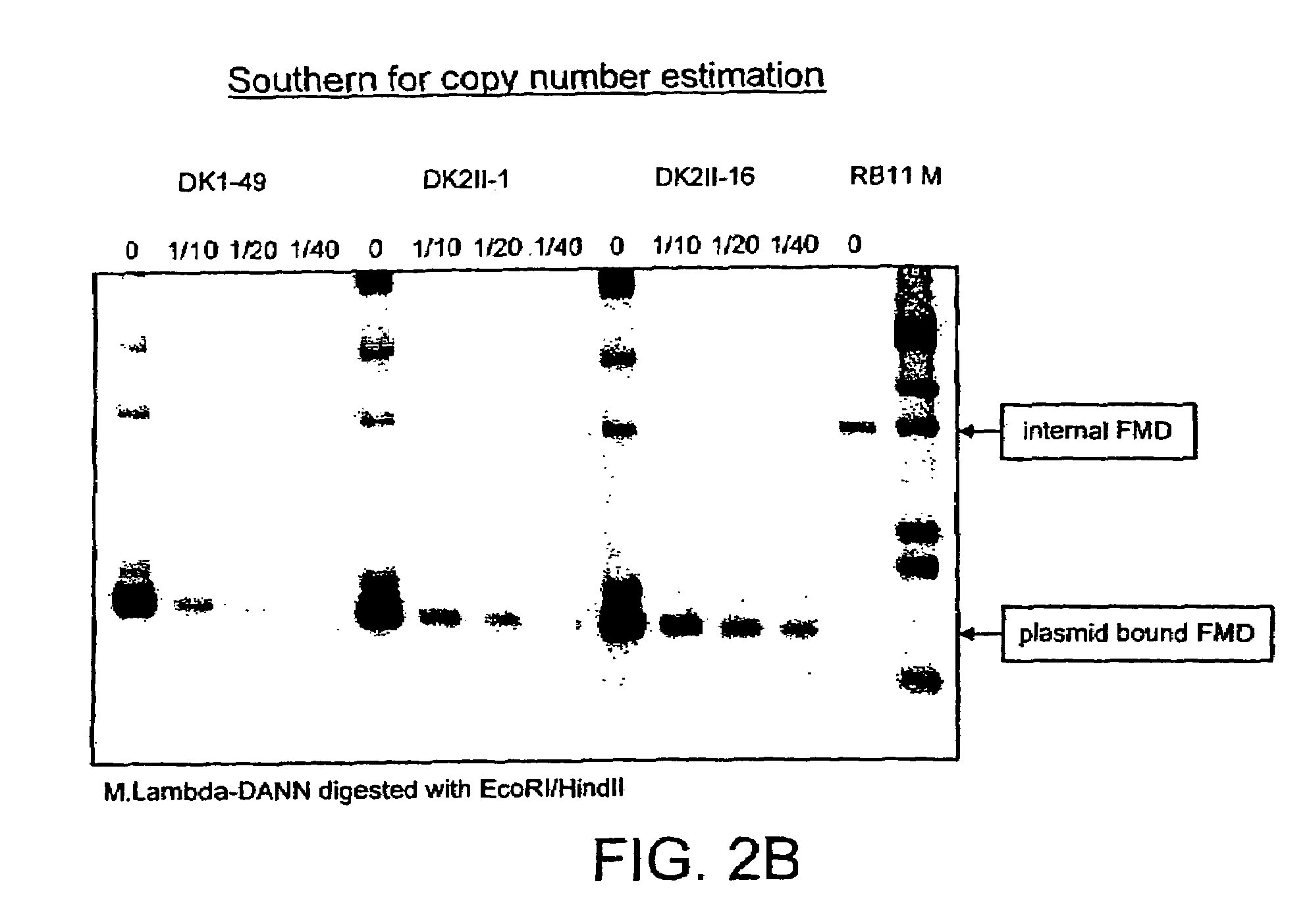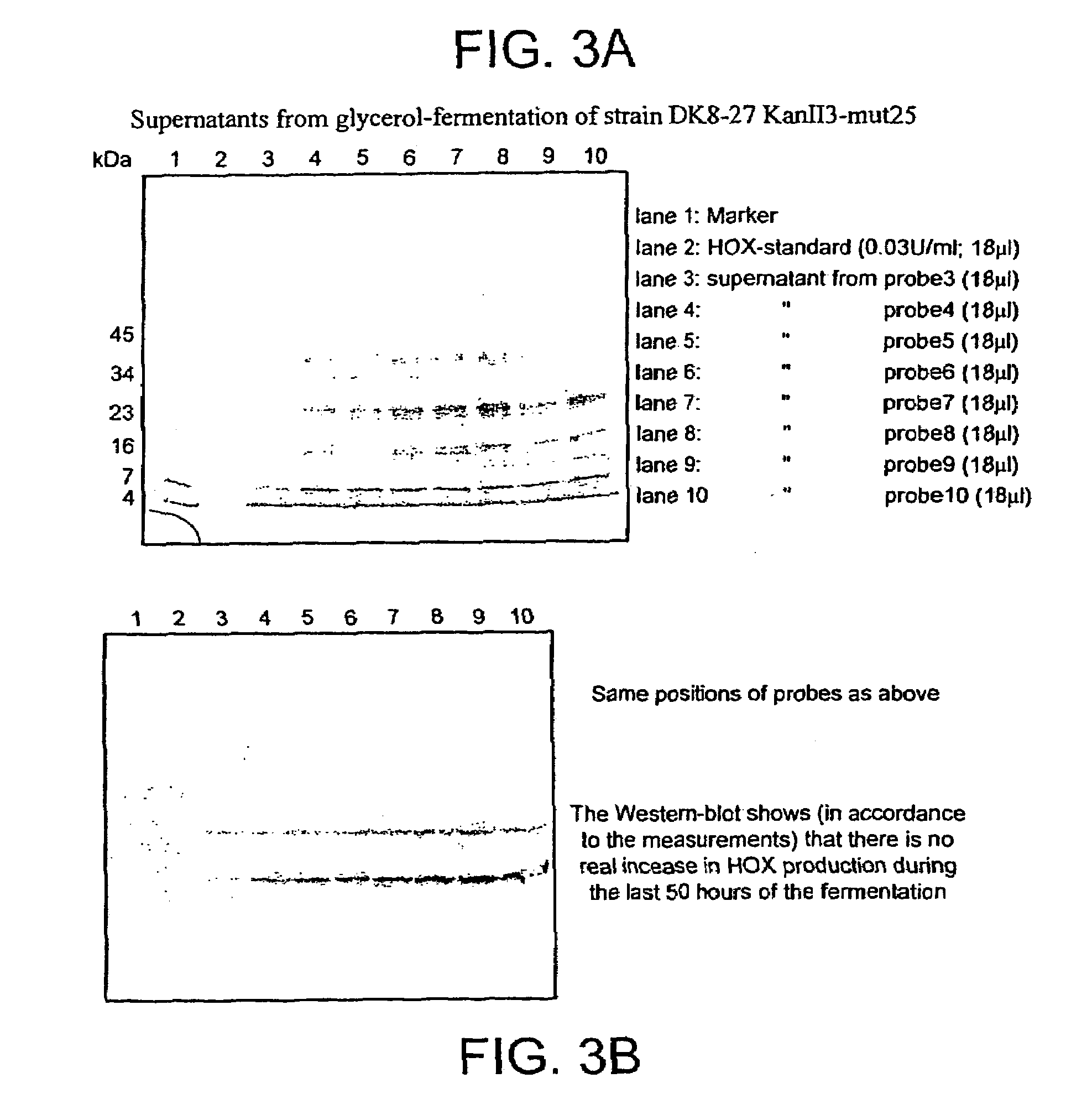Method of extracting recombinant hexose oxidase
a technology of hexose oxidase and extraction method, which is applied in the field of extracting recombinant hexose oxidase, can solve the problems of high cost, low capacity, and high cost of cell homogenizers or similar equipment required for mechanical disruption
- Summary
- Abstract
- Description
- Claims
- Application Information
AI Technical Summary
Benefits of technology
Problems solved by technology
Method used
Image
Examples
example 1
Assembly of a Synthetic, Codon Optimized HOX Gene
[0255]Gene Design
[0256]The nucleotide sequence of the native HOX gene was altered resulting in a synthetic gene. The synthetic HOX gene (FIG. 6) was designed so that the codon usage was precisely matched to the known codon preferences of biotechnologically relevant yeasts such as Pichia sp., Hansenula sp., Kluyveromyces, Yarrowinia, S. Pombe in order to facilitate high level production in these organisms. The gene was divided into three separately assembled and / or cloned fragments. The sub-assemblies, designated as 5′ proximal half were comprised of the following oligonucleotides as set out in FIG. 5 as complementary pairs: HOX1a / HOX2b (SEQ ID NOS: 1 and 2), HOX3a / HOX4b (SEQ ID NOS: 3 and 4), HOX5a / HOX6b (SEQ ID NOS: 5 and 6), HOX7a / HOX8b (SEQ ID NOS: 7 and 8), HOX9a / HOX10b (SEQ ID NOS: 9 and 10); 3′ distal half A using primers 1-6 and 3′ distal half B using primers 6-10.
[0257]5′ Proximal Synthetic HOX Gene
[0258]The 5′ proximal half o...
example 2
Transformation and Passaging
[0267]The different HOX expression plasmids were used to transform the uracil auxotrophic H. polymorpha strain RB11 to uridine prototrophy. The HOX transformants harbouring the different expression plasmids were cultivated under selective conditions for 30 generations to amplify the plasmid DNA and allow integration into the genome. The transformants were grown on complete non-selective medium for 20 generations. In addition to the selection, PCR and southern analysis were used to characterize the transformants.
[0268]Copy Number Determination of the Integrated Heterologous DNA
[0269]The genomic DNA of the untransformed host strain and the various recombinant isolates of a particular HOX construct were digested with the restriction enzymes, Asp718 / NcoI. The restricted DNA was separated on 0.8% agarose gels, transferred to membrane (nitrocellulose) and hybridized to a 32P-labelled fragment of the cloned FMD promoter. The hybridization pattern reveals two sig...
example 3
Localisation of Recombinant HOX in H. polymorpha
[0274]For immunofluorescence microscopy of recombinant H. polymorpha, cells were precultured in Yeast Nitrogen Base (YNB)+glucose to a density of 108 cells / ml. To induce expression, 3×108 cells were shifted to 100 mL shake flask cultures supplemented with YNB+1% glycerol. After 1, 2 or 3 days of growth under derepressing condition 5×108 cells were fixed by a combined para-formaldehyde (4%) and glutaraldehyde (0.2%) treatment (Hagen and Hyam, 1988). After three washes with 1 mL of PEM (100 mM Pipes, 1 mM EGTA, 1 nM MgSO4, pH 6.9), the cell walls were partially removed in PEMS (PEM+1 M sorbitol) supplemented with 0.5 mg / mL Zymolyase-100T. After approximately 60 minutes of digestion, cells were shifted to PEMS+1% Triton X-100, incubated 30 seconds and washed three times with 0.5 mL PEM. To quench unreacted glutaraldehyde cells were resuspended in PEM+1 mg / mL sodium borohydride. Immediately after this, cells were washed twice in PEM, resu...
PUM
| Property | Measurement | Unit |
|---|---|---|
| temperatures | aaaaa | aaaaa |
| temperatures | aaaaa | aaaaa |
| temperatures | aaaaa | aaaaa |
Abstract
Description
Claims
Application Information
 Login to View More
Login to View More - R&D
- Intellectual Property
- Life Sciences
- Materials
- Tech Scout
- Unparalleled Data Quality
- Higher Quality Content
- 60% Fewer Hallucinations
Browse by: Latest US Patents, China's latest patents, Technical Efficacy Thesaurus, Application Domain, Technology Topic, Popular Technical Reports.
© 2025 PatSnap. All rights reserved.Legal|Privacy policy|Modern Slavery Act Transparency Statement|Sitemap|About US| Contact US: help@patsnap.com



